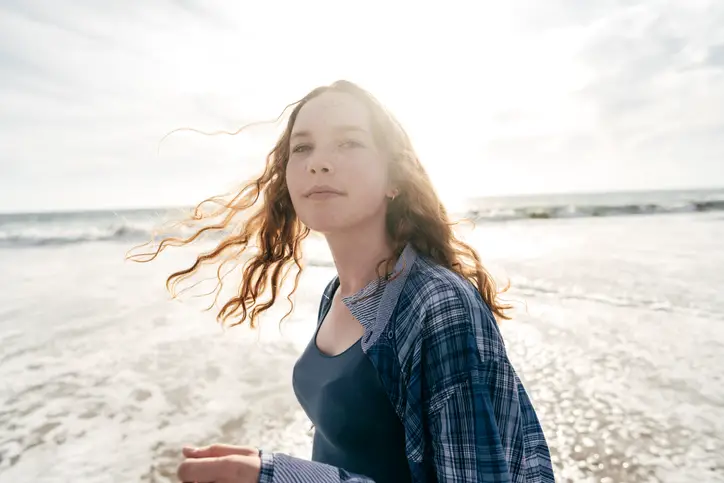As the summer warmth lures us outside, parents may be struggling to get their teenagers to follow sun protection guidelines. It can be challenging to catch the attention of younger people, for whom health concerns such as skin cancer feel like a lifetime away. One promising strategy for educating teens about sun-protective behavior is to appeal to their vanity and meet them where they are — on their smartphones.
Mobile app reveals possible effects of UV exposure
A recent study in JAMA Dermatology looked at the impact of using a face-aging mobile application on sun-protective behaviors in a group of Brazilian high school students. The face-aging mobile app used in the study, called Sunface, allows the user to take a selfie and shows what they might look like in five, 10, 15, 20, and 25 years, based on three levels of exposure the user selects: sun protection, no sun protection, and weekly tanning.
The face-aging mobile app modifies selfies by adding skin changes from chronic ultraviolet (UV) radiation exposure, such as from the sun or tanning beds. Signs of photoaging (premature aging of the skin from chronic sun exposure) include brown spots, increased facial wrinkles, uneven skin pigmentation, enlarged or broken blood vessels, and actinic keratoses (gritty rough spots that are precursors to skin cancer). While the accuracy of the face-aging app algorithm is unclear, it creates a reasonable facsimile of the effects of chronic sun exposure.
Study finds teens may be motivated by vanity
The JAMA Dermatology study authors divided the high school students into two categories. One group of students was shown the effects that UV exposure could have on their future faces via the app. The app also provided information about sun protection. The control group did not receive any intervention or sun protection education. At the start of the study, the researchers collected information from all study participants about their sunscreen application, tanning bed use, and performance of skin self-examinations. They then followed the students over six months to re-assess for changes in baseline behaviors. The study was led by the app developer.
In the face-aging app group, the percentage of students using sunscreen every day increased from 15% at the start of the study to 22.9% at the six-month follow up. There was no increase in sunscreen use in the control group. There was also an increase in the proportion of students in the face-aging app group who performed at least one skin self-examination during the six months of follow-up. There was no corresponding increase in the control group. Finally, while use of tanning beds h






